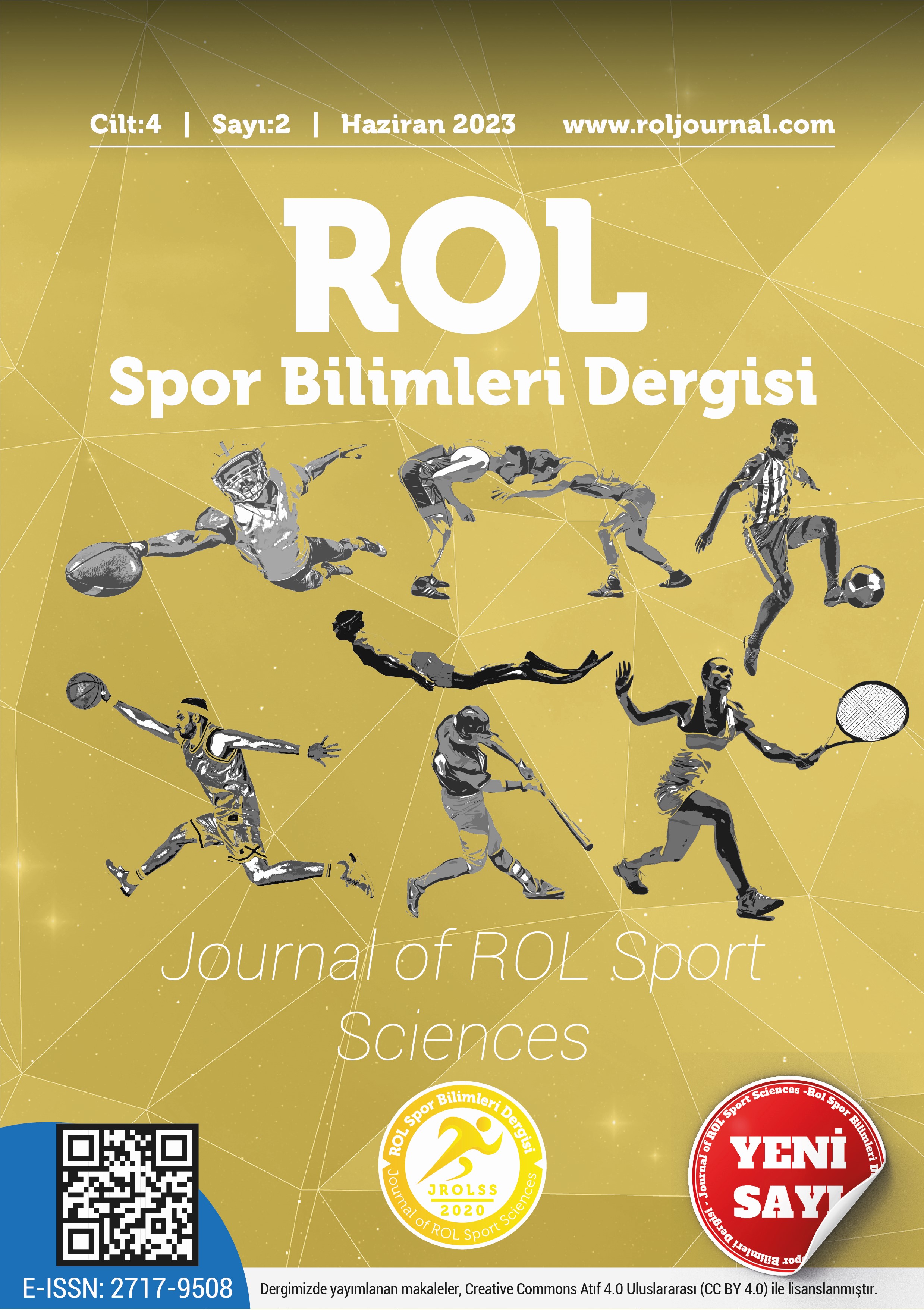Examination of the leisure time activities lesson from the static and dynamic perspectives according to the views of the teachers
DOI:
https://doi.org/10.5281/zenodo.8036641Keywords:
Classroom Teacher, Leisure Time, RecreationAbstract
The aim of this study is to determine the opinions of the classroom teachers about the leisure time activities lesson and to determine their relations with various variables. The population of the research consists of 475 classroom teachers working in Tekirdağ. In order to determine the opinions of the teachers about the leisure time activities course, the “Opinion scale for the leisure time activities course” was used in the research. Descriptive statistics were obtained by categorizing the sample group according to the variables of gender, seniority, class size and the economic status of the school district. First of all, the scale used; As a result of factor analysis and confirmatory factor analysis, the items were divided into two dimensions without changing them. According to these categories, the scores that the teachers got from the opinion scale for the leisure time activities lesson were analyzed using the SPSS 25.0 package program. According to teachers' static free time activity, dynamic leisure activity and all scale sub-dimensions; It was determined that the variables of class size and the economic status of the school district differed significantly according to all sub-dimensions (p<0.05). It is seen that the most used activities in SCI courses are based on classroom activities and can be used for make-up or study purposes.
References
Albright, J. J., & Park, H. M. (2009). Confirmatory factor analysis using amos, Indiana University Press.
Caymaz, B. (2008). Fen ve teknoloji ve sınıf öğretmeni adaylarının fen ve teknoloji okuryazarlığına ilişkin öz yeterlik algıları [Yüksek lisans tezi, Hacettepe Üniversitesi]. Ankara.
Çevik, D. B. (2011). Sınıf öğretmeni adaylarının müzik öğretimi öz yeterlik düzeylerinin incelenmesi. Ahi Evran Üniversitesi Eğitim Fakültesi Dergisi, 12(1), 145-168.
Dickson, T. J., & Gray, T. L. (2012). Risk management in the outdoors: A whole-of-organisation approach for education, sport and recreation, Cambridge University Press.
Dow, K. E., Jackson, C., Wong, J., & Leitch, R. A. (2008). A comparison of structural equation modeling approaches: The case of user acceptance of information systems. Journal of Computer Information Systems, 48(4), 106-114.
Dündar, H., & Karaca, E. T. (2011). İlköğretim okullarında serbest etkinlikler dersinin değerlendirilmesi. Erzincan Eğitim Fakültesi Dergisi, 13(2), 417-437.
Eisenbichler, K., & Hüsken, W. N. (1999). Carnival and the carnivalesque: The fool, the reformer, the wildman, and others in early modern theatre, Rodopi.
Faulkner, L., & Muller, H. (2019). Fluid sealing technology: Principles and applications, Marcel Dekker.
Güler, M., & Kandemir, Ş. (2015). Öğretmenlerin drama yöntemine yönelik görüşleri ve öz yeterlik düzeyleri. Ahi Evran Üniversitesi Kırşehir Eğitim Fakültesi Dergisi (KEFAD), 16(1), 111-130.
Gültekin, M., Atalay, N., & Ay, Y. (2014). İlköğretimde serbest etkinliklere yönelik sınıf öğretmeni ve öğrenci görüşleri. Kastamonu Eğitim Dergisi, 22(2), 419-437.
Hox, J. J., & Bechger, T. M. (1995). An introduction to structural equation modeling. Family Science Review, (11), 354-373.
Holt, R., & Vigarello, G. (2011). Bedenin tarihi, Yapı Kredi Yayınları.
Kıncal, R. Y. (2013). Bilimsel araştırma yöntemleri, Nobel Yayıncılık.
Özenoğlu, K. H. (2006). Fen bilgisi öğretmenliği öğrencilerinin biyoloji ile ilgili öz yeterlik inançlarının karşılaştırılması [Doktora tezi, Dokuz Eylül Üniversitesi]. İzmir.
Millî Eğitim Bakanlığı (2010, Temmuz 20). İlköğretim okulu haftalık ders çizelgesi konulu karar, https://www.resmigazete.gov.tr/eskiler/2006/12/20061216-5.htm
Millî Eğitim Bakanlığı (2010, Ağustos 21). Serbest etkinlikler genelgesi yayımlandığı sayı, https://ttkb.meb.gov.tr/
Munro, B. H. (2005). Statistical methods for health care research, Lippincott Williams & Wilkins.
Özenmiş, P. (2000). Zihinsel engelli olan ve olmayan çocukların nesne ile oyun davranışlarının karşılaştırmalı olarak incelenmesi. Özel Eğitim Dergisi, 4(1), 46-53.
Rosenthal, R. (1991). Meta-analytic procedures for social reserach, Sage.
Sargın, M., & Taşdemir, M. (2014, Ekim 16-18). Sınıf öğretmenlerinin serbest etkinlikler dersine ilişkin görüş ve sorunları: Bir durum çalışması (Şırnak ili örneği). [9th ınternational balkans education and science congress]. Edirne.
Şen, S., & Sarikaya, İ. (2016). Serbest etkinlikler dersi kullanımının çeşitli değişkenler açısından incelenmesi. Uluslararası Eğitim, Bilim ve Teknoloji Dergisi, 1(1),1-16.
Şimşek, Ö. F. (2007). Yapısal eşitlik modellemesine giriş: Temel ilkeler ve LISREL uygulamaları, Ekinoks Yayınevi.
Yazıcıoğlu, Y., & Erdoğan, S. (2014). SPSS uygulamalı bilimsel araştırma yöntemleri, Detay Yayıncılık.
Downloads
Published
How to Cite
Issue
Section
License
Copyright (c) 2023 Journal of ROL Sport Sciences

This work is licensed under a Creative Commons Attribution 4.0 International License.



